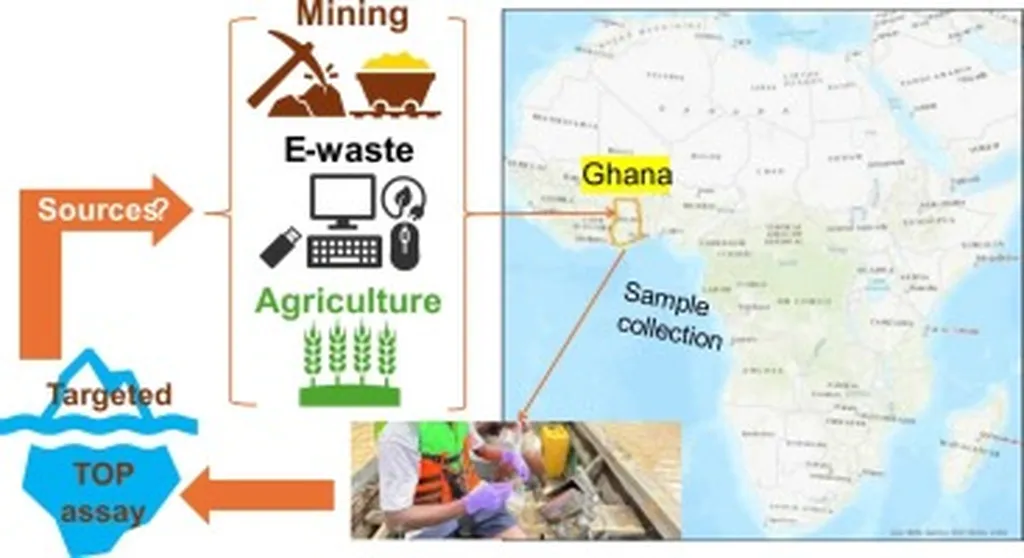In the heart of Ghana, a silent and largely overlooked environmental concern has been brought to light by a groundbreaking study published in the Journal of Hazardous Materials Letters. Researchers, led by Liang Zhao from the Department of Chemistry at the Norwegian University of Science and Technology (NTNU), have uncovered a substantial underestimation of PFAS (per- and polyfluoroalkyl substances) pollution across diverse land-use types, with significant implications for agriculture and other sectors.
PFAS, often referred to as “forever chemicals” due to their persistence in the environment, have been a growing concern globally. While previous research in developing countries has primarily focused on imported sources like electronic waste, this study reveals that local land-use activities may be major contributors to PFAS contamination.
The research team employed a refined direct total oxidizable precursor (dTOP) assay, which proved to be a game-changer in detecting previously overlooked PFAS precursors. By increasing the oxidizing agents eightfold, they achieved the highest PFAS yields, uncovering a hidden burden of these chemicals in riverine sediments.
“Over 99% of the detected PFAS were attributed to previously untargeted precursors,” Zhao explained. “This emphasizes the iceberg nature of PFAS contamination, where routine methods capture only a small visible fraction.”
The study examined four distinct land-use types: mining, municipal and electronic waste, and agriculture. Surprisingly, mining and agricultural areas showed higher PFAS levels than the e-waste zone, indicating that locally driven sources are dominant contributors. This finding has profound implications for the agricultural sector, as contaminated soils and water bodies can lead to bioaccumulation in crops, posing potential risks to food safety and human health.
The tailored dTOP approach used in this study proved essential in revealing these hidden PFAS burdens. “Our findings highlight the need for broader monitoring frameworks to inform environmental risk assessment and sustainable land-use management in developing regions,” Zhao stated.
The commercial impact of this research is substantial. For the agriculture sector, understanding the extent of PFAS contamination is crucial for implementing effective mitigation strategies, ensuring food safety, and maintaining market access. Farmers and agribusinesses may need to invest in advanced testing and remediation technologies to address these emerging contaminants.
Moreover, the refined dTOP assay developed in this study could become a standard tool for environmental monitoring, providing a more comprehensive picture of PFAS contamination. This could drive innovation in environmental technology and create new opportunities for companies specializing in water and soil testing.
As the world grapples with the challenges posed by PFAS, this research underscores the importance of tailored approaches to environmental monitoring. By revealing the hidden extent of PFAS pollution, it paves the way for more informed decision-making and sustainable land-use management, ultimately benefiting both the environment and the agricultural sector.
In the words of Liang Zhao, “This study is a wake-up call for more rigorous and comprehensive monitoring of PFAS in developing countries. It’s not just about e-waste; local activities are significant contributors, and we need to address them to protect our environment and public health.”

